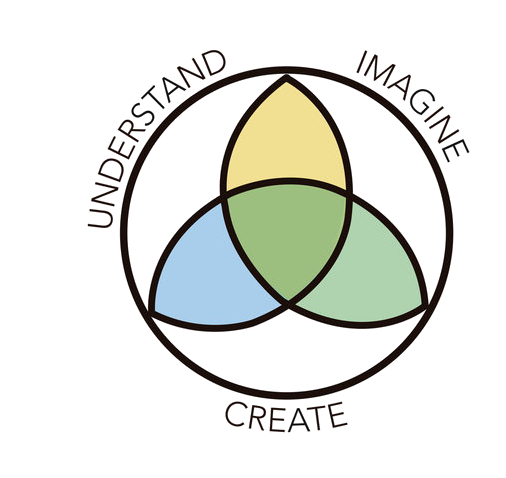Engagement Toolbox
Facilitation Mindset
Imagine Chicago’s Foundations for Facilitation
What do we keep in mind as we design and implement an Imagine event? How do we support diversity and social inclusion? What helps build community and encourages people to translate their aspirations into actions?
What follows are some of the facilitation practices and tools which Imagine Chicago uses to encourage each participant to bring his/her self fully to the experience:
Value Local Context
Listen and incorporate local language, cultural traditions, resources, practices, current questions.
Understand what processes are already in motion for which this can serve as a next step. Refer to and build upon these.
Expand Participation
Demonstrate inclusion, in thoughts, words and deeds, to overcome the mindset and practice of division (by race, religion, age, education, etc.).
Expand ‘who’ is included and mix them up in unlikely combinations.
Encourage the participation and leadership of multiple generations, so a vision of the future is present and highly visible.
Create Space for Belonging and Hope
Shape the physical space to nurture participation. Notice the size, conditions, flexibility and range of space, and orient it in ways that cultivate connections and conversations.
Trust life, trust people. Be fully present.
Give space to spirituality and meaning making as a resource for hope and transformation.
Offer a confident, embodied vision of human (and life) possibilities.
Assume people want integrity-- to align their values and actions.
Be honest, natural, vulnerable. Allow room for risk-taking and mistake making, for oneself and others.
Actively nurture a safe and open climate.
Have good food and time to enjoy it.
Empower Participation
Begin with and draw from participants’ questions and experiences. Make clear that everyone’s participation is valued, but not prescribed.
Ask interesting, constructive questions and listen to responses with respect, delight, interest and commitment. Positively mirror back contributions (by smiling, repeating, recording, appreciating, summarizing).
Structure the rhythm of interaction to create safety before gradually stretching comfort zones. Move from individual reflection to pairs to small groups to large groups; allow time for large group activities to be personally appropriated. Give options with respect to assignments.
Integrate artistic expression, to strengthen peoples’ confidence and self understanding
as creators. Create processes that are friendly to a range of learning modes and styles. Emphasize fun!
Minimize the likelihood of dependency or control by using lateral rather than hierarchical structures, which validate the skills, knowledge and value of each individual and organization.
Provide time to reflect on and share learning. Use closing circles to highlight and summarize what people have learned and gain support for actions for moving forward.
Re-enchant the Culture of Citizenship
Use language in which people are subjects and co-creators of the future (not objects in a depersonalized politics). Favor a culture of community based on commitment over a culture of professionalism and expertise.
Elevate the language of hope and possibility, to overcome a discourse of cynicism and judgment.
Assume problem statements are frustrated dreams. Reframe them into possibility statements.
Build Community Identity and Accountability
Invite storytelling. Exalt the lived experience of community members. Create ways for them to explore and value each other’s experiences.
Encourage group work and group learning, the sharing of gifts, hopes and commitments.
Jointly brainstorm possible action steps and ways to support and sustain the network that emerges.
Leave responsibility for action to the participants gathered. Use processes to distill what has most energy and commitment and ask for leadership around these priorities.
Get feedback on what worked, had value, lessons learned and ways it will be applied. Where practical, provide organizers that will provide a simple framework for reflection and comment.
Share lessons learned with whoever might benefit from your experience.
Build in opportunities for celebration!







